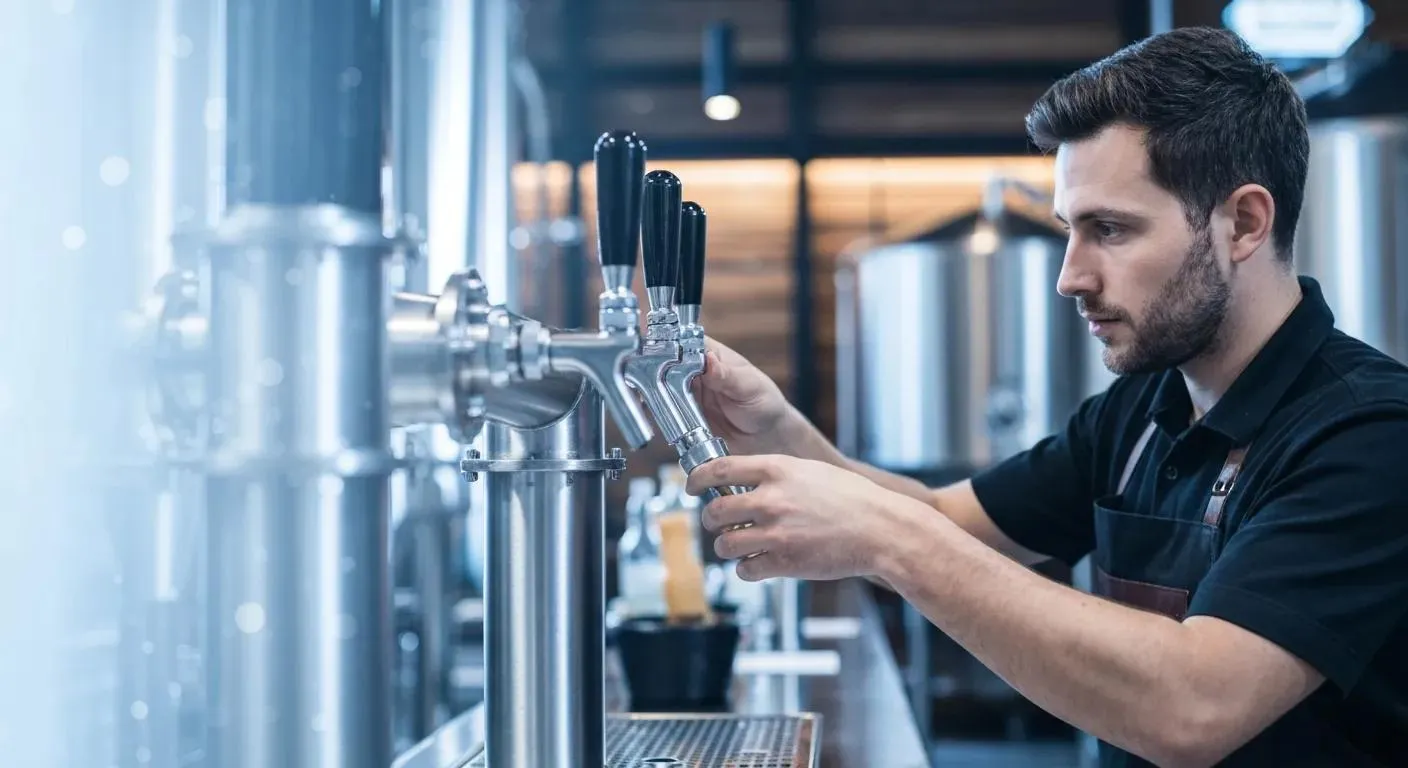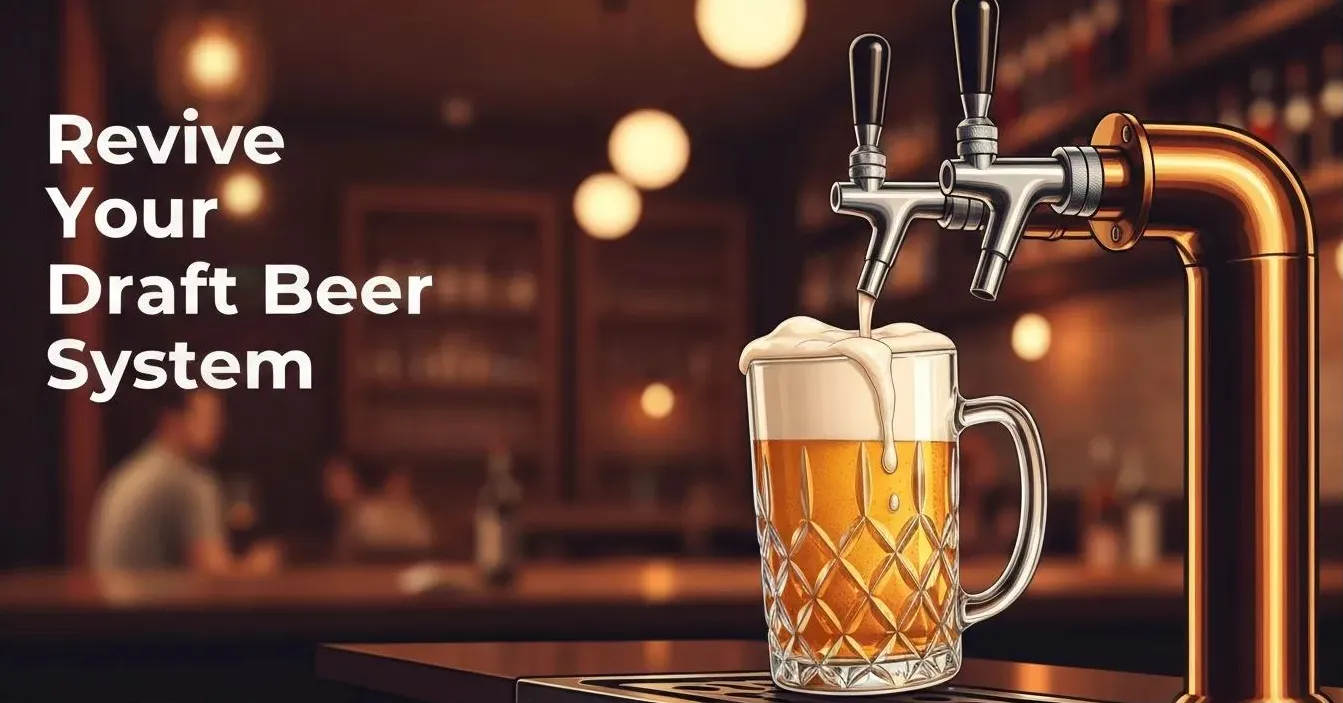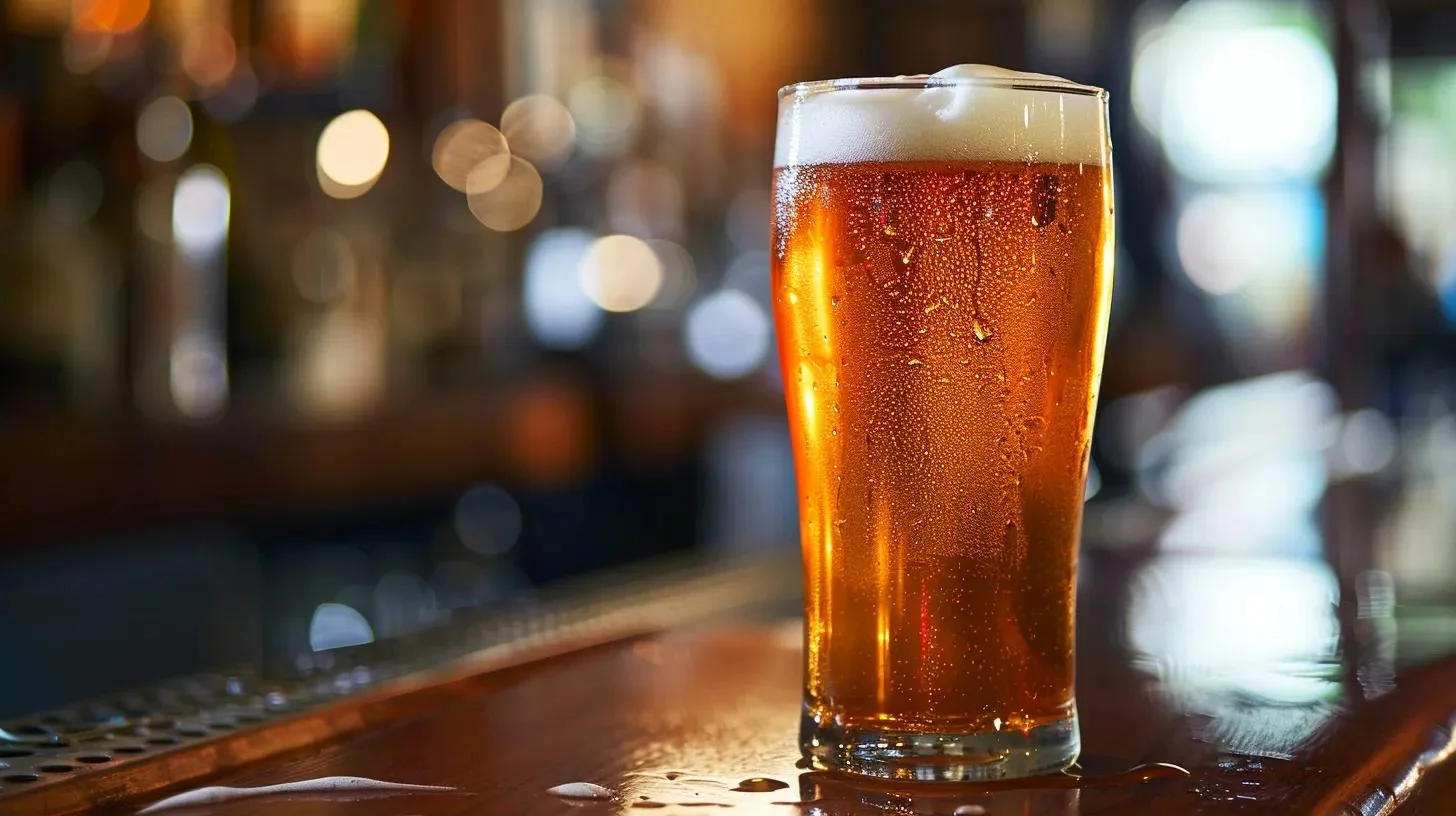Kegerator Bar Essentials: How to Elevate Your Entertaining Value

Kegerators have revolutionized the way beer enthusiasts enjoy their favorite drafts. They are a fusion of kegs and refrigerators, and they embody both convenience and quality. A kegerator is more than just a novelty item; it's a centerpiece of entertainment. It enables beer lovers to serve and preserve their beer at the ideal temperature.
By incorporating a kegerator into a bar set-up, hosts can offer guests the unique experience of a freshly poured pint without the hassle of bottles and cans.
Installation of a kegerator bar requires thoughtful planning and consideration for both the space it will inhabit and the type of beverages it will dispense.
The process involves selecting the right model to suit individual needs regarding capacity, cooling specifications, and tapping systems.
With a variety of design styles and functional features available, creating a tailored draft beer experience has never been more accessible. Adding accessories and upgrades further enhances the functionality and aesthetic appeal of a kegerator, making it a worthy investment for those looking to elevate their entertaining experience.

Key Takeaways
- A kegerator combines refrigeration with draft beer dispensing for convenience.
- Proper installation and the choice of the right kegerator are crucial for optimal performance.
- Accessories and thoughtful upgrades can personalize and improve the kegerator experience.
Kegerator Basics
Kegerators are specialized refrigeration units designed to store and dispense beer, offering a convenient and cost-effective solution for beer aficionados. They come in various models, including full-size, mini, and portable kegerators, each suited to different needs and spaces.
Understanding Kegerators
A kegerator is an appliance that combines a refrigerator with a beer dispensing system, allowing one to keep kegs of beer at an optimal, consistent temperature. The unit typically includes components like a CO2 tank, regulator, coupler, beer, airlines, tap, and faucet. They can accommodate different keg sizes, ranging from smaller mini kegs to larger standard kegs, keeping beer fresh and carbonated over extended periods.
Types of Kegerators
Full-Size Kegerators: These are designed for commercial use, can hold multiple full-size kegs, and are often built into a home bar setup.

- Pros: Ideal for frequent entertainers or commercial settings.
- Cons: Require ample space and higher upfront investment.

Mini Kegerators: These compact versions are suitable for smaller kitchen spaces and typically designed for mini kegs.
- Pros: Perfect for casual beer drinkers or those with limited space.
- Cons: Limited capacity, usually holding one mini keg.
Portable Kegerators: Small and mobile, these kegerators are for outdoor events or tailgating.
- Pros: Mobile and convenient for on-the-go use.
- Cons: Vary in size but generally offer less storage than full-size units.
Each type of draft beer provides a unique way to enjoy draft beer at home, with variations designed to cater to different preferences and circumstances.
Design and Installation
When incorporating a kegerator into your home bar, choosing between a built-in or freestanding unit and considering a kegerator conversion kit are essential decisions that determine the ease of installation and the aesthetic appeal of the final setup.
Built-In vs. Freestanding Units
Undercounter kegerators, often referred to as built in units, are designed to fit seamlessly within cabinetry, providing a sleek and integrated appearance. These units require precise measurements and often need professional installation to ensure proper ventilation and function.
On the other hand, freestanding units offer more flexibility in placement and can be more cost-effective. However, they may not blend as smoothly with the surrounding decor and typically have visible ventilation grills that cannot be obstructed.
- Built-In Kegerator:
- Requires precise cut-out dimensions.
- Ventilation space is critical to avoid overheating.
- Freestanding Unit:
- Offers placement flexibility.
- Requires adequate space around for air circulation.

Kegerator Conversion Kits
For those who have an existing refrigerator or wish to learn how to customize their bar set up, kegerator conversion kits provide all the necessary components to transform a standard refrigerator into a functional kegerator.
These kits typically include a CO2 tank, a regulator, beer and airlines, a beer tap, and a keg coupler.
- Kegerator Conversion Kit Includes:
- CO2 tank and regulator for gas supply.
- Beer tap and keg coupler for dispensing.
It’s important for one to carefully follow the instructions to ensure proper installation time and performance.
Key Components and Features
When configuring a kegerator bar, understanding its key components and features is crucial for ensuring the quality and consistency of poured beer.
Attention to temperature control, CO2 and regulator systems, and regular cleaning and maintenance underpins the performance of a kegerator.
Temperature Control
Kegerators must maintain a consistent temperature to keep beer at its optimal serving condition.
Primarily, digital thermostats are responsible for precise temperature adjustments.
These thermostats can accurately measure and stabilize the internal environment, ensuring that beer remains at its ideal serving temperature, which is typically between 36°F and 38°F.

CO2 and Regulator Systems
The carbonation level of the beer is maintained through the CO2 tank and regulator systems.
Each kegerator requires a CO2 tank connected to regulators. These regulators control the pressure of the CO2 gas entering the keg, crucial for the right amount of carbonation and a consistent pour.
An optimal pressure setting is generally between 12 to 14 PSI, but this number can vary based on the beer type and personal preference.
Cleaning and Maintenance
Keeping a kegerator clean and well-maintained is essential for the longevity of the equipment and the taste of the beer.
Regular cleaning of the drip tray and lines prevents bacterial buildup and off-flavors.
Routine maintenance checks of seals and the integrity of CO2 lines ensure the system operates efficiently, and there is no gas leakage from the tank or regulators.

Selecting the Right Kegerator
When choosing the ideal kegerator for a bar, it's crucial to consider the specific requirements based on keg size and intended use, as well as the durability and quality of the material.
Sizing and Capacity
Before purchasing a kegerator, one must assess the keg sizes they plan to use.
Common keg types include the full-sized Half Barrel, the Quarter Barrel, and smaller Cornelius kegs, each with different capacities.
An Edgestar kegerator model, for example, might accommodate different keg sizes, offering versatility.
It is important to measure the intended space to ensure the unit fits, and to decide between a single or multi-tap system based on how many types of beer will be on tap.
- Half Barrel: Typically used in commercial settings; holds about 124 pints.
- Quarter Barrel: Also known as a "pony keg"; holds roughly 62 pints.
- Cornelius Keg: Popular with homebrewers; holds about 53 pints.
Material and Build Quality
The material of the kegerator is a determining factor in its longevity and performance.
Kegerators made from stainless steel are not only robust and corrosion-resistant, but also offer a sleek appearance that can complement any bar setting.
Brands like Kegco are known for their high-quality build and could be a reliable choice for those prioritizing durability.
It's also recommended to consider insulation quality and energy efficiency, which contribute to the overall preservation of beer and operational costs.
Accessories and Upgrades
When it comes to kegerator bars, optimal performance and personalization are key. Accessories and upgrades are essential for maintaining the quality of your draft beer while also putting your individual stamp on the unit.
Customization Options
Customizing a kegerator can involve swapping out standard components for parts that better suit one's tastes and needs.
One can start by selecting unique tap handles that reflect their personality or the types of beer they’re serving.
Additionally, beer dispensers come in various styles and finishes, allowing for a tailored appearance that matches home or commercial bar aesthetics.
Enhancing Your Kegerator Experience
To elevate the functionality of a kegerator, owners should consider upgrading to a high-quality keg coupler. This ensures a proper and secure connection between the keg and the beer line.
Including a draft beer tower with an integrated beer cooler can help maintain the ideal temperature from keg to glass for longer. This is crucial for the perfect pour.
Moreover, durable and well-designed components won’t just improve the experience but can also extend the lifespan of the kegerator system.
Enjoying Your Kegerator
Once your kegerator is all set up, the joys of pouring and serving beverages become a delightful everyday possibility. The kegerator not only chills beverages to the optimal temperature but also allows for the freshest flavor, especially with draft beer.
Serving the Perfect Drink
To serve the perfect pint of draft beer, one must ensure the kegerator is at the correct temperature, generally between 36 to 48 degrees Fahrenheit.
A well-maintained kegerator can faithfully replicate the bar experience. It pours rich and creamy heads that capture the essence of each beer's profile. Whether it's a robust stout or a crisp lager, the nuances in taste are best enjoyed through proper serving methods.
It's not just about beer—kegerators also serve up other beverages like cold brew coffee. Serving cold brew coffee from a kegerator offers a unique twist for coffee enthusiasts looking to elevate their home bar setup with a non-alcoholic option.
Kegerator Uses Beyond Beer
While traditionally associated with storing and dispensing beer, kegerators are highly versatile and can be used to supply a range of beverages:
- Cold Brew Coffee: Offering a smooth, less acidic sip, a kegerator turns a home bar into a coffee haven.
- Craft Sodas: Artisanal sodas on tap can add diversity and appeal to any gathering.
- Kombucha: The health-conscious can indulge in the probiotic benefits of chilled kombucha straight from the tap.
The integration of a kegerator in a home setting goes beyond beverages. It also doubles as a conversation starter and centerpiece that echoes an individual's palate and preference.
Whether it's a standard home bar or a personal nook for a morning fix of cold brew, the kegerator stands as a testament to sophistication and the art of enjoying a well-chilled drink.
Summary
A kegerator bar is an innovative addition to any beer enthusiast's space. It not only serves as a focal point for social gatherings but also offers practical benefits.
For durability and external use, Outdoor Kegerators are specifically designed to withstand various weather conditions. They typically have more robust insulation and weatherproof features.
The process of setting up a bar with beer dispensing needs a built-in kegerator and involves careful planning and design. It is crucial to consider the space available, as detailed on Storables, to ensure the bar fits well within the desired area and meets the functional requirements of serving beer.
A kegerator uses carbon dioxide to dispense beer, keeping it fresh and carbonated for extended periods. Beer consumers can enjoy fresh draft beer with an excellent taste and quality, comparable to what one would expect at a pub.
Using kegerators in bars eliminates the need for glycol cooling systems. This is due to the proximity of the beer kegs to the faucets, which simplifies the setup and maintenance.
In terms of cost-effectiveness, investing in a kegerator can save money in the long run. By buying beer in bulk, users cut down on costs per pint, making kegerators an economically smart choice in addition to their convenience, comfort, and efficiency.



